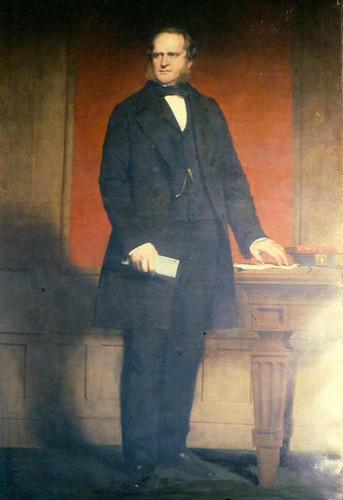South Coast NSW History Story
The Manning Brothers (Edye, William Montague and James Alexander Louis)
The Manning Brothers (Edye, William Montague and James Alexander Louis)
The three Manning brothers all had significant impacts on the development of the NSW South Coast, but in different areas:
Edye Manning (1807–1889)
Edye Manning’s principal interest was shipping.
Edye came to New South Wales from England in December 1831 with his wife and son.
In 1838 he entered the emerging steamship trade with a 103-ton paddle-steamer called the Maitland. He used this in the salvage of wrecks of other ships. Soon thereafter he bought the 54-ton paddle-steamer William the Fourth (the first coastal steamer built in Australia) and the 153-ton/50-horsepower (to illustrate how underpowered steamers were at that time, a sedan car’s engine today typically develops 180 to 200 horsepower) Sophia Jane (the first steamer imported to NSW from England) and used its engine in a 108-ton paddle steamer, the Phoenix, that he had built in Sydney. The Phoenix serviced the NSW North Coast.
In 1858 his company amalgamated with two others to form the Illawarra Steam Navigation Company which thereafter provided the major shipping service along the NSW South Coast. Edye Manning became the company’s manager and was responsible for the construction of the company’s significant wharf facilities in Sydney Harbour.
William Montagu Manning (1811–1895)
William Montagu Manning was a substantial landowner, barrister and politician.
In 1837 he decided to join his brothers in NSW and arrived with his wife on 31st August on the City of Edinburgh. He was soon appointed a magistrate. In 1844 he became NSW Solicitor-General.
He acquired real estate from 1837: 1200 acres (486 ha) at Mulgoa, some 50 town allotments at Kiama and 1000 acres (405 ha) in the Illawarra. In 1848 he held 63,000 acres (25,495 ha) in the Lachlan District.
He and his brothers, Edye and James, along with Robert and Edwin Tooth and T.S. Mort, became partners in the Twofold Bay Pastoral Association in 1852 that held over 400,000 acres (161,876 ha) in the Monaro and Bega districts. With Mort, William Manning financed the Maizena Co. in Merimbula.
In October 1851 Manning was nominated to the Legislative Council by Governor FitzRoy. In 1856 he became Attorney-General in Stuart Donaldson’s ministry (the Colony’s first parliamentary ministry), a position he also held (at least) during governments headed by Henry Parker, John Robertson and Charles Cowper.
In February 1858 he was knighted by the Queen.
When the Twofold Bay Pastoral Association was dissolved in 1860, Manning was paid £22,000 by Robert Tooth. Much of this he used to build a substantial residence in Edgecliff in Sydney.
On 12th March 1868, as President of the Sydney Sailors' Home, he invited the Duke of Edinburgh to a picnic at Clontarf to raise funds for the home. Manning was walking beside the Duke when the Duke was shot. Manning thereafter claimed that he had saved the Duke’s life by diving for the pistol brandished by Henry O’Farrell, the would-be assassin.
In February 1875 the Governor, Sir Hercules Robinson, asked Manning to form a ministry. However, he failed to be able to do so.
In April 1876 Manning became a judge of the Supreme Court. As a result, he divested himself of many of his land holdings.
Then, in April 1878, Manning was elected Chancellor of the University of Sydney. The university expanded rapidly under his guidance and in the 1880s faculties of law, medicine, science and engineering were established. In 1881 he gained the admission of women to all university privileges on 'an equal footing with men'; the women students' union, Manning House, is named in his honour.
James Alexander Louis Manning (1814–1887)
James Alexander Louis Manning was a pastoralist.
He became a partner in the Twofold Bay Pastoral Association which held 400,000 acres (161,876 ha) in three stations on the Monaro and three in the Bega district. From 1854, as managing partner, he lived on the Association’s central estate, Kameruka. He overcame a labour shortage by introducing German families and cleared a road route from the Monaro to the coast at Merimbula, making that port the trade outlet for the southern Bega Valley.
Manning bought Kameruka in 1861, but then sold it a year later.
With his brother, William, he started over at Warragaburra near Bega in 1864 on a 2000 acre property. He planted thriving vineyards, introduced maize to the district, initiated scientific American methods of cheese making and agitated for a telegraph between Bega and Sydney.
James Manning was a close friend of T.S. Mort (of Bodalla), with whom he shared an interest in the development of refrigeration for preserving meat whilst it was being transported.
From 1871 Manning lived in Sydney, keeping an interest in Warragaburra which was managed by his son Albert (A.L. Manning).
Image: 1895 portrait of William Montagu Manning
